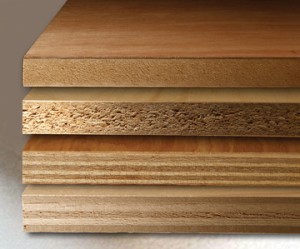Wood Species
 Hardwood is a wood that is derived from dicot angiosperm trees. It is a term that may also be used for wood that is derived from broadleaf trees that are deciduous in temperate and boreal latitudes, but evergreen in the tropics and subtropics.
Hardwood is a wood that is derived from dicot angiosperm trees. It is a term that may also be used for wood that is derived from broadleaf trees that are deciduous in temperate and boreal latitudes, but evergreen in the tropics and subtropics.
Hardwoods are not necessarily harder than softwoods. They range enormously in hardness and density. For example balsa wood is softer than any softwood and it is classified as a hardwood.
Hardwoods will tend to have a more complex structure than softwoods. The main feature separating hardwoods from softwoods is the presence of pores, or vessels. The vessels will show a considerable variation in size, shape of perforation plates, and structure of cell wall.
 Softwood is wood from gymnosperm trees such as conifers. Softwood is the source of about 80% of the world’s production of timber. Even though it is named softwood it is not necessarily softer than hardwoods. Softwood trees are also faster growing than their hardwood counterparts.
Softwood is wood from gymnosperm trees such as conifers. Softwood is the source of about 80% of the world’s production of timber. Even though it is named softwood it is not necessarily softer than hardwoods. Softwood trees are also faster growing than their hardwood counterparts.
Engineered wood, also known as composite wood, or manufactured board; includes a range of derivative wood products which are bound together with adhesive. They are engineered to precise design specifications to meet national and international standards. Engineered wood products are used in a variety of applications, from home construction to commercial buildings to industrial products. These products can be used for joists and beams that replace the need for steel beams.
Typically, engineered wood products are made from the same hardwoods and softwoods used to manufacture lumber. Sawmill scraps and other wood waste can be used for engineered wood composed of wood particles or fibers, but whole logs are usually used for veneers, such as plywood, MDF or particle board. Some engineered wood products, like oriented strand board (OSB), can use trees from the poplar family, a common but non-structural species.
